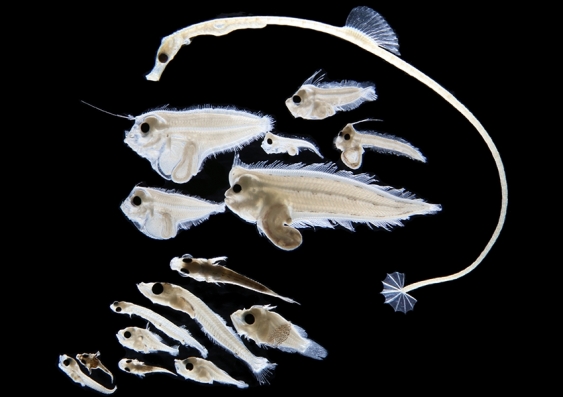Larval fish database to show effects of climate change on fisheries
A new larval fish database collated over the last 30 years will be used to measure marine ecosystem state and change as well as seasonal patterns of various fish species.
A new larval fish database collated over the last 30 years will be used to measure marine ecosystem state and change as well as seasonal patterns of various fish species.

Professor Iain Suthers
0414 385 351
A database of larval fish collected over the last three decades and analysed by UNSW researchers will help scientists assess the effects of climate change on the health of Australian fisheries.
In a paper published today in Nature’s Scientific Data journal, researchers show how the database provides the seasonal dynamics of larval fish in temperate and subtropical Australian waters since the 1980s.
Larval fishes are a pragmatic way of measuring marine ecosystem state and change, as well as species-specific patterns in seasonality. The high level of taxonomic expertise required to identify larval fishes to species level, and the considerable effort required to collect them, make these data extremely valuable.
UNSW Professor Iain Suthers, who is leader of the National Ichthyoplankton Monitoring and Observing (NIMO) initiative, said larval fish are the delicate early life stage that all fish experience.
“Larvae are carried in ocean currents before they are large enough to swim, and therefore larvae may be found in new areas due to changing ocean currents,” Professor Suthers said.
“This benchmark dataset provides the first synthesis of Australia’s considerable efforts in sampling the coastal ocean, and will guide management on the effects of climate change on our valuable fisheries.”
The database is a collaborative effort from different universities, research institutions and government agencies that was catalysed by the need to understand how the fish community is changing due to warming of Australian oceans.
One important discovery was the decline in jack mackerel since 2000, but the increase in anchovy, sardine and reef fish like wrasse.
It was produced from the collation of 3178 samples of larval fishes across 12 research projects from 1983 to November 2016, and includes recent monitoring of larval fishes at the Integrated Marine Observing Systems’ (IMOS) coastal national reference stations off Brisbane, Sydney, Hobart, Adelaide and Perth.
Lead author of the paper, UNSW researcher Dr James Smith said that getting historical data into an open database was a great achievement for the initiative.
"The changing abundance of larval fishes due to changing seasons provides a tangible signal of climate change for ecosystem management."
“It takes a substantial amount of effort and money to collect all these samples and the impact these datasets have go beyond the study that was initially set up to collect them,” he said.
“Historical data that is openly available can serve as a benchmark to which to compare and understand the changes occurring in the marine environment and in particular the marine fish community.
“The changing abundance of larval fishes due to changing seasons provides a tangible signal of climate change for ecosystem management. This publicly available dataset is one of the first of its kind in the world, and will be a resource for decades to come.”
Comparing larval fishes among projects can be problematic due to differences in taxonomic resolution, and identifying all taxa to species can be extremely challenging. This study reports a standard taxonomic resolution (of 221 taxa) for this region to help guide future research. All data reported here has been expertly resolved to this taxonomic resolution.
Having an Integrated Marine Observing System in place facilitated this work and provided the framework and capability to undertake this study.
“IMOS is delighted to see larval fish researchers using our infrastructure and becoming part of our national community,” IMOS director Tim Moltmann said.
“The work looks promising. We’re now in discussion with national providers and funders of fisheries and aquaculture research to determine what next. And the team have already made a major contribution by building a new, open access dataset for use and reuse.”
This work was also supported and partly funded by the Australian Fisheries Management Authority (AFMA), which also provided the impetus to go beyond monitoring and examine these historical datasets.
******************************
The data behind this data paper (and the Master Species List) can be accessed here:
The database is being managed by CSIRO Oceans and Atmosphere staff, and an ongoing version of this will be freely available in the near future through the Australian Ocean Data Network Portal (AODN; http://portal.aodn.org.au/) and will serve as a data repository for surveys in the region.